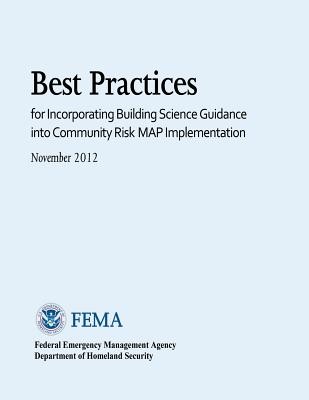
- We will send in 10–14 business days.
- Author: Federal Emergency Management Agency
- Publisher: CreateSpace Independent Publishing Platform
- Year: 2013
- Pages: 60
- ISBN-10: 1482653133
- ISBN-13: 9781482653137
- Format: 21.6 x 27.9 x 0.3 cm, softcover
- Language: English
- SAVE -10% with code: EXTRA
Best Practices for Incorporating Building Science Guidance into Community Risk MAP Implementation (November 2012) (e-book) (used book) | bookbook.eu
Reviews
Description
The Federal Emergency Management Agency's (FEMA's) mission is "to support our citizens and first responders to ensure that as a Nation, we work together to build, sustain, and improve our capability to prepare for, protect against, respond to, recover from, and mitigate all hazards." As the Federal Emergency Management Agency (FEMA) floodplain mapping program has evolved, Flood Insurance Study (FIS) data and maps have become more detailed and more accurate through improved computer models and greater use of Geographic Information Systems (GIS). In addition, the technical requirements of the FEMA Risk Mapping, Assessment, and Planning (Risk MAP) program have resulted in an expansion of the amount of useful flood data. As the data have improved, the use of the data has extended beyond floodplain management permits and flood insurance. For example, the data are being used to increase the flood resistance in the design of new buildings and retrofits of existing buildings. Design information, which is available in the FEMA Building Science Branch library, includes enhanced design, siting, construction, and retrofit guidance and requirements for buildings in or adjacent to Special Flood Hazard Areas (SFHAs). The library consists of publications, technical bulletins, training descriptions, and tools, all of which are available online. The flood risk data available from the Risk MAP program provides FEMA with additional resources to inform communities, property owners, and other interested parties about the vast library of Building Science resources. The resources can be used together with flood risk maps and other flood hazard products to reduce the loss of life, number of injuries, and property damage from flood events. The purpose of this report is to present the best practices for incorporating Building Science flood mitigation information into the Risk MAP program and strategies for informing interested parties of the Building Science resources.
EXTRA 10 % discount with code: EXTRA
The promotion ends in 19d.05:43:22
The discount code is valid when purchasing from 10 €. Discounts do not stack.
- Author: Federal Emergency Management Agency
- Publisher: CreateSpace Independent Publishing Platform
- Year: 2013
- Pages: 60
- ISBN-10: 1482653133
- ISBN-13: 9781482653137
- Format: 21.6 x 27.9 x 0.3 cm, softcover
- Language: English English
The Federal Emergency Management Agency's (FEMA's) mission is "to support our citizens and first responders to ensure that as a Nation, we work together to build, sustain, and improve our capability to prepare for, protect against, respond to, recover from, and mitigate all hazards." As the Federal Emergency Management Agency (FEMA) floodplain mapping program has evolved, Flood Insurance Study (FIS) data and maps have become more detailed and more accurate through improved computer models and greater use of Geographic Information Systems (GIS). In addition, the technical requirements of the FEMA Risk Mapping, Assessment, and Planning (Risk MAP) program have resulted in an expansion of the amount of useful flood data. As the data have improved, the use of the data has extended beyond floodplain management permits and flood insurance. For example, the data are being used to increase the flood resistance in the design of new buildings and retrofits of existing buildings. Design information, which is available in the FEMA Building Science Branch library, includes enhanced design, siting, construction, and retrofit guidance and requirements for buildings in or adjacent to Special Flood Hazard Areas (SFHAs). The library consists of publications, technical bulletins, training descriptions, and tools, all of which are available online. The flood risk data available from the Risk MAP program provides FEMA with additional resources to inform communities, property owners, and other interested parties about the vast library of Building Science resources. The resources can be used together with flood risk maps and other flood hazard products to reduce the loss of life, number of injuries, and property damage from flood events. The purpose of this report is to present the best practices for incorporating Building Science flood mitigation information into the Risk MAP program and strategies for informing interested parties of the Building Science resources.


Reviews